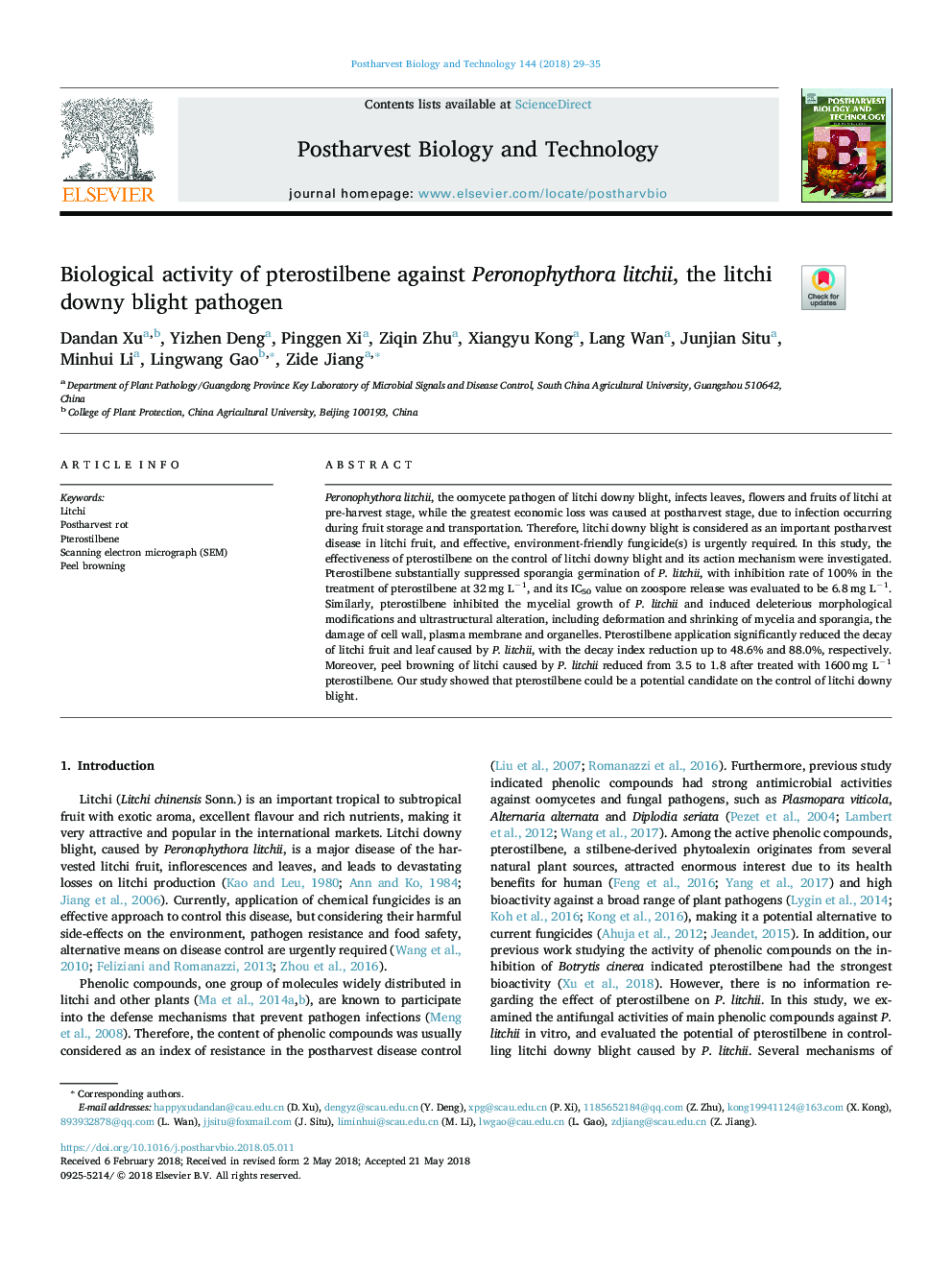| Article ID | Journal | Published Year | Pages | File Type |
|---|---|---|---|---|
| 8881823 | Postharvest Biology and Technology | 2018 | 7 Pages |
Abstract
Peronophythora litchii, the oomycete pathogen of litchi downy blight, infects leaves, flowers and fruits of litchi at pre-harvest stage, while the greatest economic loss was caused at postharvest stage, due to infection occurring during fruit storage and transportation. Therefore, litchi downy blight is considered as an important postharvest disease in litchi fruit, and effective, environment-friendly fungicide(s) is urgently required. In this study, the effectiveness of pterostilbene on the control of litchi downy blight and its action mechanism were investigated. Pterostilbene substantially suppressed sporangia germination of P. litchii, with inhibition rate of 100% in the treatment of pterostilbene at 32â¯mg Lâ1, and its IC50 value on zoospore release was evaluated to be 6.8â¯mg Lâ1. Similarly, pterostilbene inhibited the mycelial growth of P. litchii and induced deleterious morphological modifications and ultrastructural alteration, including deformation and shrinking of mycelia and sporangia, the damage of cell wall, plasma membrane and organelles. Pterostilbene application significantly reduced the decay of litchi fruit and leaf caused by P. litchii, with the decay index reduction up to 48.6% and 88.0%, respectively. Moreover, peel browning of litchi caused by P. litchii reduced from 3.5 to 1.8 after treated with 1600â¯mg Lâ1 pterostilbene. Our study showed that pterostilbene could be a potential candidate on the control of litchi downy blight.
Related Topics
Life Sciences
Agricultural and Biological Sciences
Agronomy and Crop Science
Authors
Dandan Xu, Yizhen Deng, Pinggen Xi, Ziqin Zhu, Xiangyu Kong, Lang Wan, Junjian Situ, Minhui Li, Lingwang Gao, Zide Jiang,
